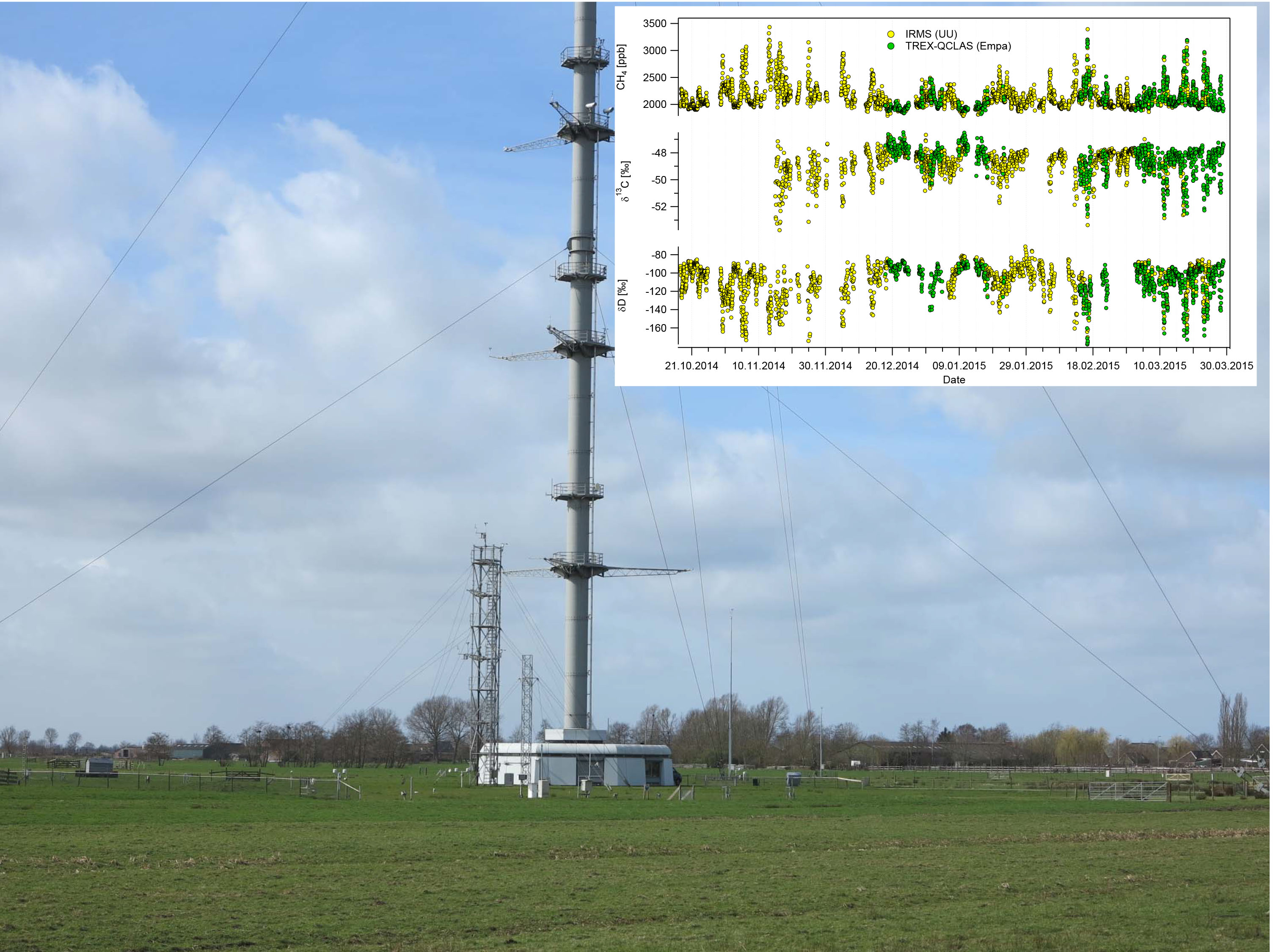Real-time analysis of δ13C- and δD-CH4 in ambient air with laser spectroscopy: method development and first results
Scientist Empa: Sarah Eggleston (Postdoc)
The TREX-QCLAS technique developed at Empa can be applied for real-time monitoring of CH4 isotopic composition. Two exemplary applications have been realized in past year. In a first two-week inter-laboratory comparison campaign in cooperation with Utrecht University, MPI-BGC Jena and RHUL, the average difference between TREX–QCLAS data and bag/flask sampling–IRMS values was within the extended WMO compatibility goals of 0.2 and 5 ‰ for δ13C- and δD-CH4 (Eyer et al. 2016).
In a second five-month campaign at the Cabauw tall tower (Netherlands), the system was applied in parallel to on-line IRMS from Utrecht University (Röckmann et al., 2016). The dataset reveals the overwhelming contribution of isotopically depleted agricultural CH4 emissions from ruminants at the Cabauw site but also allows the identification of specific events with elevated contributions from more enriched sources such as natural gas and landfills. The final dataset was compared to model calculations using the global model TM5 and the mesoscale model FLEXPART-COSMO. The results of both models agree better with the measurements when the TNO-MACC emission inventory is used in the models than when the EDGAR inventory is used. This suggests that high-resolution isotope measurements have the potential to further constrain the methane budget when they are performed at multiple sites that are representative for the entire European domain.

